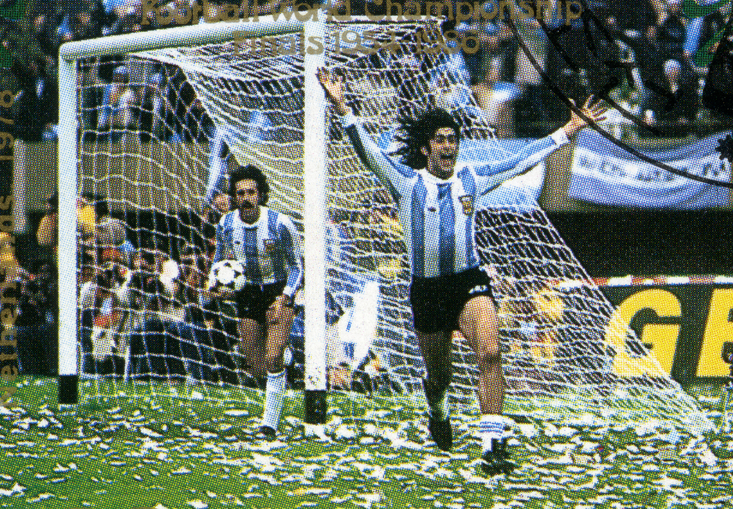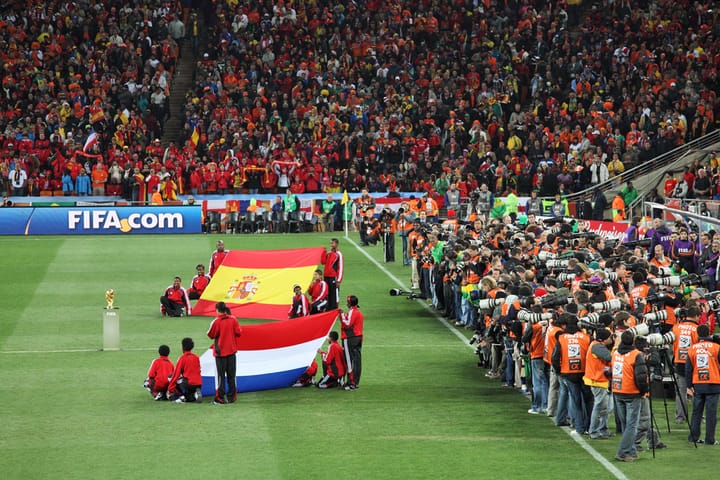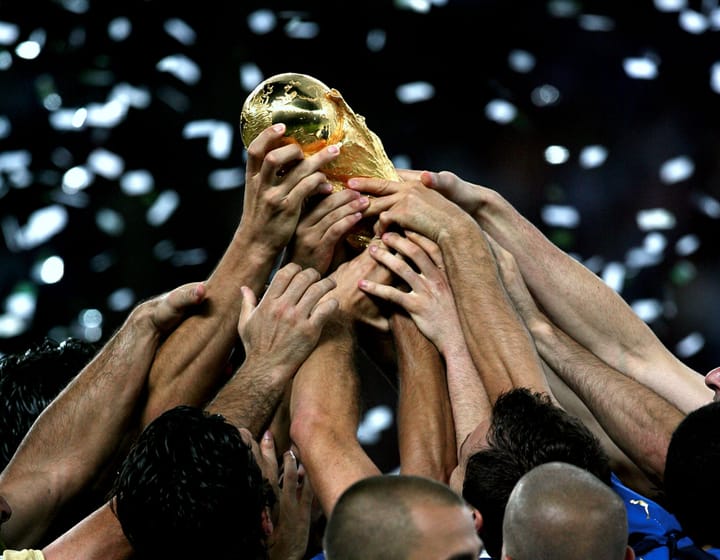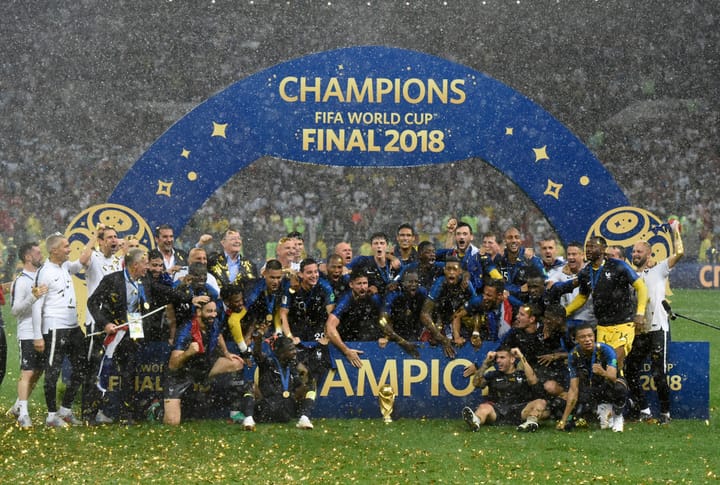Controversies, Triumphs, and Turmoil: The 1978 World Cup Story
In this article, we take a look back at the controversial 1978 World Cup finals in Argentina.

The 1978 World Cup, the 11th edition of the FIFA World Cup, was a momentous event that left an unforgettable mark on the history of football. Held in Argentina from June 1st to June 25th, this tournament brought together 16 teams from around the globe, all vying for the coveted title of world champion.
In this article, we will delve into the captivating story of the 1978 World Cup, exploring the pre-tournament atmosphere, key players, memorable matches, and the controversies that surrounded the event. We will also examine the role of FIFA and the lasting legacy of this significant chapter in the annals of the FIFA World Cup.
The 1978 World Cup was held in Argentina amidst a backdrop of political turmoil and human rights abuses. The country had been under military rule since 1976, and the ruling junta saw the tournament as an opportunity to improve their international image and divert attention from the atrocities they were committing. Despite calls for a boycott from organizations like Amnesty International, FIFA decided to proceed with Argentina as the host country.
The preparations for the World Cup were behind schedule, but the Argentine government made it a priority to ensure the tournament went ahead as planned. They spent lavishly on infrastructure projects like new roads, stadiums, and hotels, with costs spiraling out of control. The military regime also hired a US advertising agency to help influence international opinion in their favor. Despite the human rights concerns, most Western media organizations presented a largely positive narrative about Argentina in the lead-up to the tournament.
Key Players and Absentees
The 1978 World Cup featured a host of talented players who left their mark on the tournament. The Argentine squad boasted the likes of Mario Kempes, the tournament's top scorer with six goals, and captain Daniel Passarella. Other notable Argentine players included Osvaldo Ardiles, Leopoldo Luque, and goalkeeper Ubaldo Fillol.
The Dutch team showcased a strong lineup with players such as Rene van de Kerkhof, Willy Brandts, Arie Haan, Dirk Nanninga, and Robbie Rensenbrink. Italy's squad featured Roberto Bettega and Paolo Rossi, while Brazil's team included the talented midfielder Zico. Peru's Teofilo Cubillas was another standout player, scoring five goals in the tournament.
However, the 1978 World Cup was also notable for the absence of several key players and teams:
- Johan Cruyff, the Netherlands' star player, withdrew from the tournament due to personal reasons and speculation that it was an act of protest against the Argentine junta.
- England failed to qualify for the second consecutive World Cup.
- European champions, Czechoslovakia, Yugoslavia, and the Soviet Union, also did not qualify.
- The West German government threatened to withdraw, and players like Paul Breitner refused to participate due to political reasons.
Despite these absences, the tournament saw the emergence of new teams on the world stage, with Iran and Tunisia making their World Cup debuts. Austria qualified for the first time since 1958, while France, Spain, and Hungary returned to the finals after a 12-year absence.
Soccer Amidst Controversy
The 1978 World Cup was marred by controversy and allegations of political interference by the country's military junta government. The regime, responsible for the deaths of between 15,000 and 30,000 of its own citizens during the "Dirty War," used the tournament as a propaganda tool to improve its international image and deflect criticism of its human rights abuses.
Some of the most notable controversies surrounding the tournament included:
- Argentina's 6-0 win against Peru in the second round helped them reach the final. Allegations of bribery and political intimidation surrounded this match.
- The final between Argentina and the Netherlands was controversial due to allegations of match-fixing, military intimidation, and biased refereeing.
- The Netherlands' refusal to attend the post-match ceremonies after the final.
- The Navy Mechanics School in Buenos Aires, less than a mile away from a World Cup stadium, was being used as a clandestine prison where political opponents were tortured and killed during the tournament.
Despite efforts by opponents of the Argentine military regime to highlight the government's human rights abuses during the World Cup, their actions were often met with violence and repression. Groups like Amnesty International raised awareness about the atrocities, and dissident movements such as the Mothers of the Plaza de Mayo gained worldwide attention. However, the regime focused on making the tournament look good on television, downplaying its human rights abuses, and using Argentina's success in the World Cup to unify the country and boost national pride.
Memorable Matches
The 1978 World Cup saw a total of 102 goals scored throughout the tournament, with Argentina and the Netherlands leading the pack with 15 goals each. The group stage produced several surprises, including Austria finishing ahead of Brazil in Group 3 and Poland winning Group 2 ahead of the reigning world champions, West Germany.
The second round saw the Netherlands and Italy progress from Group A, while Argentina and Brazil advanced from Group B. Some of the most memorable matches from this stage include:
Netherlands vs. Italy: In this thrilling encounter on June 25, 1978, the Dutch team defeated Italy 2-1 after extra time. Ernie Brandts scored at both ends, first an own goal for Italy and later a goal for his country.
Argentina vs. Peru: This controversial match, held on June 21, 1978, at Estadio Gigante de Arroyito in Rosario, ended with Argentina winning 6-0 against Peru. The victory secured Argentina's place in the final but has been scrutinized due to allegations of match-fixing, as Argentina needed to win by a margin of three goals or more and score at least four goals to progress.
The final, held on June 25, 1978, at Estadio Monumental in Buenos Aires, was a tense and dramatic affair between Argentina and the Netherlands. The host nation emerged victorious, winning 3-1 in extra time, with Mario Kempes scoring twice and Daniel Bertoni adding a third goal. This victory marked Argentina's first World Cup title.
The third-place match saw Brazil defeat Italy 2-1, marking the end of Brazil's golden generation, with players like Rivellino and Nelinho retiring from the national team.
Legacy of the 1978 World Cup
The 1978 World Cup left a complex legacy, intertwined with the political turmoil and human rights abuses that marked Argentina's history during this period. While the tournament showcased the sporting prowess of the Argentine team and the individual brilliance of players like Mario Kempes, who emerged as the top scorer with six goals, it also served as a distraction from the atrocities committed by the military dictatorship led by General Jorge Rafaél Videla.
The World Cup was used as a tool to project an alternative message internationally, with the Argentine government investing heavily in infrastructure and hosting a successful tournament. The victory was celebrated by Argentines, many of whom were unaware of the scale of human rights abuses during the junta's reign. The effects of the 1978 World Cup lasted for years, with the perpetrators of these abuses only beginning to face trial nearly 30 years later.




